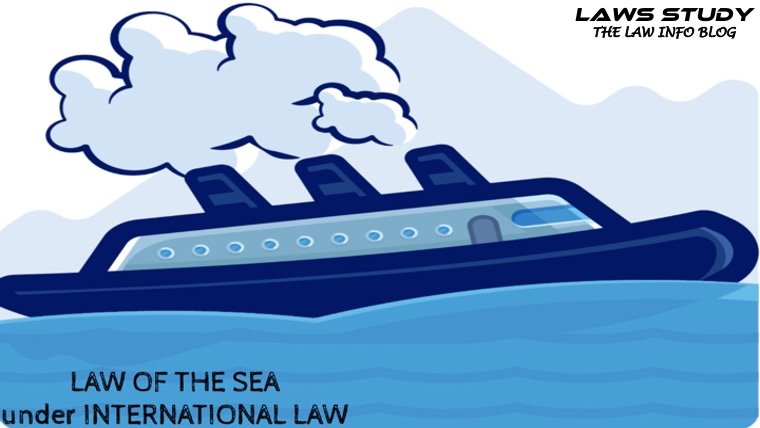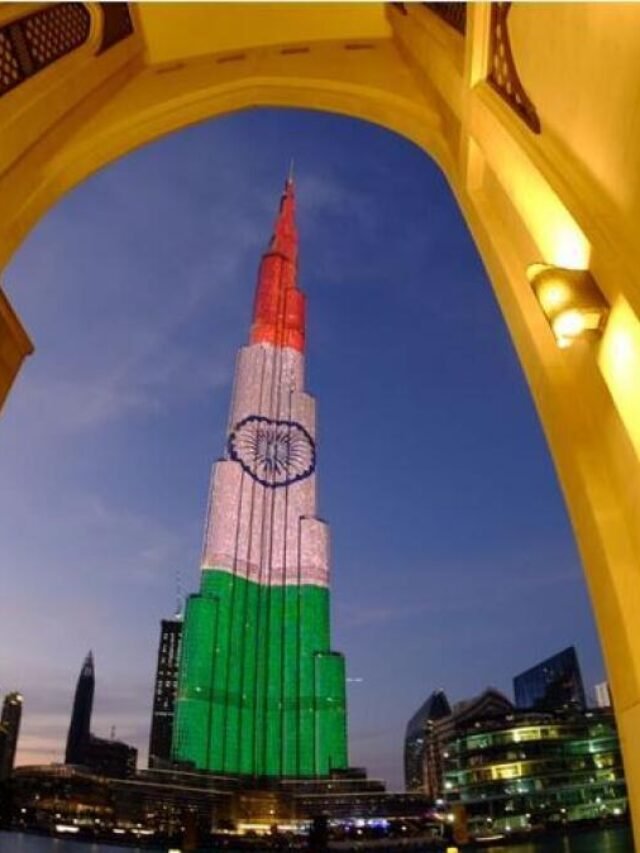Introduction of Law of the Sea: Law of the sea is a set of global rules, laws, and treaties that governments utilize to maintain law and order, development, and positive coexistence on the high seas.
It is governed under the Sea convention, which is an international convention. UNCLOS, which was adopted on December 10, 1982, provides the basis for the entirety of this legislation. The “convention for the seas,” as it is known, attempts to establish global law that governs jurisdictional seas, trade lanes, and maritime resources. It came into effect in 1994 after being ratified by the required 60 countries; even by the earlier twenty-first century, the convention had already been recognized by more than 150 countries.
As per the 1982 treaty, each country’s sovereign coastal regions extend a maximum of 12 nautical miles (22 kilometers) beyond its coast, but international vessels are allowed to travel within this zone unharmed. The passage is legal as long as a ship does not engage in illegal activities such as weapon testing, surveillance, smuggling, fishing, major pollution, or scientific research.
From which coastal regions include sea routes used for international navigation, foreign shipping’s navigational rights are boosted by the substitute of the innocent passage system with one of transit passage, which imposes very few restrictions on foreign vessels. A comparable regime occurs in important sea lanes that pass through archipelago waters (e.g., Indonesia).
Codification of the Law of the Sea
Following the UN’s establishment in 1945, the UN Security Council and Secretariat concluded that existing regulations, particularly those relating to the Law of the Seas, needed to be codified and that a long-term solution to the issue of a country’s marine territorial limit was required.
With this in perspective, the UNCLOS was enacted, codifying based on customary standards, and it went into effect in 1999, despite the fact that the treaty was signed in 1982.
Since 1945, nearly every single country in the world has modified the “cannon-shot rule” with the “12 nautical mile rule,” which states that an area of 12 nautical miles out of a country’s seacoast is reasonably expected to be that country’s preferential maritime limit, and these rules are also accepted and recognized under UNCLOS laws and regulations.
The Ram Setu Bridge, which connects Dhanushkodi in India and Talaimannar in Sri Lanka, was a significant cause of maritime disputes between India and Sri Lanka.
“UNCLOS” is a treaty that governs maritime law around the world. It was ratified in 1982. It establishes standards for all uses of the oceans and their resources, as well as a comprehensive regime of law and order throughout the world’s oceans and seas. It encapsulates traditional ocean-use rules in a single document while also implementing new legal principles and regimes and addressing new concerns. The Convention also lays the groundwork for future developments in specific areas of maritime law (LAW OF THE SEA).

The UN Agency for Administrative Affairs’ “DOALOS” administers the Secretariat of the Conventions on the Sea Convention. Which provides information, guidance, and assistance to States in order to promote a deeper understanding of the Protocol and related Provisions, as well as their widespread acceptance, consistent and coherent application, and effectiveness Execution.
The Region keeps a record of all activities pertaining to the Conference, the law of the sea, and maritime affairs and submits a yearly report to the United Nations General Assembly. It also aids the UN’s Oceans and Rules of the Sea Open-ended Qualitative Consultative Process in evaluating such developments.
UNCLOS
The United Nations Conference on the Law of the Sea is an intergovernmental treaty that establishes a globally valid and enforceable instrument for the development and preservation of coastal ecosystems in areas beyond the jurisdiction of states.
In 2015, the U.N General Assembly resolved to create and maintain a globally valid and enforceable instrument within UNCLOS for the development and protection of maritime biodiversity in places outside of state jurisdiction.
The U.N General Assembly resolved in resolution 72/249 to hold an inter-governmental conference (IGC) at its seventy-second session in 2017, with the goal of completing the instruments as soon as appropriate. To that purpose, the General Assembly resolved that the convention should meet for four sessions, each comprising ten working days, the first session which would take place from September 4 to 17, 2018, the 2nd and 3rd sessions in 2019, and the last 4th session during the first half of 2020.
The very first session of the Intergovernmental Convention was held from September 4 to 17, 2018, and the second session was held from March 25 to April 5, 2019, at the United Nations Headquarters in N.Y, Ms. Rena Lee of Singapore was elected president of the IGC.
The Convention, in compliance with Resolution 72/249
Addressed the issues outlined in a framework agreed upon in 2011, notably:
- marine BBNJ protection and sustainable use;
- maritime genetics resources (MGR), include benefit-sharing issues;
- Area-Based Management Techniques (ABMTs), such as marine protected areas;
- EIAs (environmental impact assessments);
The IMO Secretary-general, symbolized by employees from the Marine Ecosystem Division and the Legal Affairs and External Connections Division, participates in the Conference and participates actively in the agreements, with the primary goal of ensuring that IMO would also perform a significant role in the implementation of the BBNJ instrument and also that the new instrument would not have an adverse influence on IMO’s requirement and structure.
To coordinate the position, the IMO works closely with the UN, particularly DOALOS and ISA, as well as other specialized agencies such as the FAO, UNESCO’s IOC, and the International Labour Organization (ILO).
On the 21st of June 2019, the Secretary-General, Mr. Kitack Lim, hosted an awareness program on BBNJ at the IMO Headquarters. Ms. Rena Lee participated in the event. The ISA Secretary-General, Mr. Michael Lodge, had sent a video presentation. The presentations were presented by IMO employees. The ICS, which represents the industry, also had an opportunity to discuss. Representatives from more than 50 Member States attended the meeting.
Exclusive Economic Zone (EEZ), Contiguous Zone (CZ), Continental Shelf (CS), and Territorial Sea (TS)
When we speak regarding maritime zones, we have been entrusting the zones so that the state’s sovereignty can indeed be identified in a few zones over which they have sovereignty.
Territorial Sea
The territorial sea is the region directly adjacent to the state. The national coastline is 12 nautical miles in length. The territorial sea is completely within the sovereignty of the nation. It was developed in the mid-1800s. Earlier, the fire of a cannon shot has been used to accurately measure the territorial waters zone there until the cannon shot attained the sovereignty of that state 3 nautical miles away. Following that, the United Nations ruled that it was invalid and stated that it was 12 nautical miles. The U.N never universally acknowledged the cannon shot. Until convention came along, they used to follow cannon shots.
This also contains an integrated waters baseline, which is calculated by measuring 12 nautical miles from the low groundwater connection along the coast.
The Concept of Unintentional (Innocent) Passage
Any state may pass through the water territory of another state without causing harm to that state’s interests.
The cargo vessel passing through the innocent passage shall not endanger the safety of the coastal region and have to do so in reasonable care.
Which constitutes an impediment to innocent passage
- Any intimidation, coercion, or infringement of the state’s sovereignty.
- Weapons use data collection, fishing activity, or pollution.
Zone of Contiguity
The contiguous zone expands from the maritime boundary to a distance of 12 nautical miles.
It is the region of the coast over which the state has minimal control in order to prevent any violation of customs, uncontrolled migration, or regulatory frameworks within the territorial waters. The nation cannot create total control, such as a territorial zone.
The Continental Shelf is a term used to describe, It is determined by calculating from a 200-nautical-mile contiguous zone, which consists of the seabed and submarine. Initially, the continental shelf was measured using the biscuit method, which resulted in a distance of 300 nautical miles. 2500 meters long from “the isobath”. The continental shelf is the land beneath the sea after the contiguous zone; the coastal region has restricted authority over this zone; the coastal state’s only authority is to identify and exploit natural resources. When another nation needs to utilize, it must first request the coastal state for permission.
Natural resources include fish, minerals, and other resources, and the convention normally considers a distance of 200 nautical miles.
Exclusive Economic Zone (EEZ)
The EEZ extended over 200 nautical miles from the territorial sea baseline. It is a contiguous zone plus a continental shelf. The state’s authority over it is restricted to mining, fishing, science, and research. Nothing else has the right to do anything that improves the economic status of the coastal region of that territory until the exploration is permitted. They must also take important steps for the conservation and protection and preservation of natural resources when establishing artificial islands. Exploration should not be exaggerated. As well as certain liberties are the same as on the high seas.
India’s Position on the Issue of Territorial Waters
The status of India on the Law of the Sea is governed by Article 297 of the Indian Constitution and laws governing bodies of water, contiguous zone, EEZ, and other maritime zones. Maritime zone laws govern Indian national sovereignty over the bodies of water and coastal waters, as well as the territory and airbases above those waters. So every point on a forming limit region is described as being 12 nautical miles from the nearest approach to the reference point. Most international submarines have passageways across coastline authority.
The High Seas
The term “high seas” refers to all areas outside of a country’s EEZ, territory, or waterways. Grotius proposed this concept in his maxim “Mare Liberum” in 1609, claiming that the sea could not be possessed by anybody.
As a consequence, all Countries agreed that ships should be allowed to employ freedom of navigation, fight, fish, and construct artificial islands, among other things. The 1982 Declaration on the Maritime law, on the other hand, significantly altered the command. Article 87(2) of the agreement establishes a general nature restriction on high seas freedom, stating that such freedom “must be exercised with appropriate respect for the interests of other Nations in their practice of high seas liberty.”
Conclusion of the Law of the Sea
UNCLOS, 1982 establishes a general framework for running the government nations’ rights with regard to the oceans of the world. The International Marine Organization (IMO) is a United Nations specialized organization designed to promote maritime safety and eliminate ship pollution.
The oceans gave rise to life. Still now, whenever the landmasses have been explored & their innards have been given access by roadway, canal, and air, the majority of the world’s population lives within 200 miles of the sea and has a friendly association with it.
























